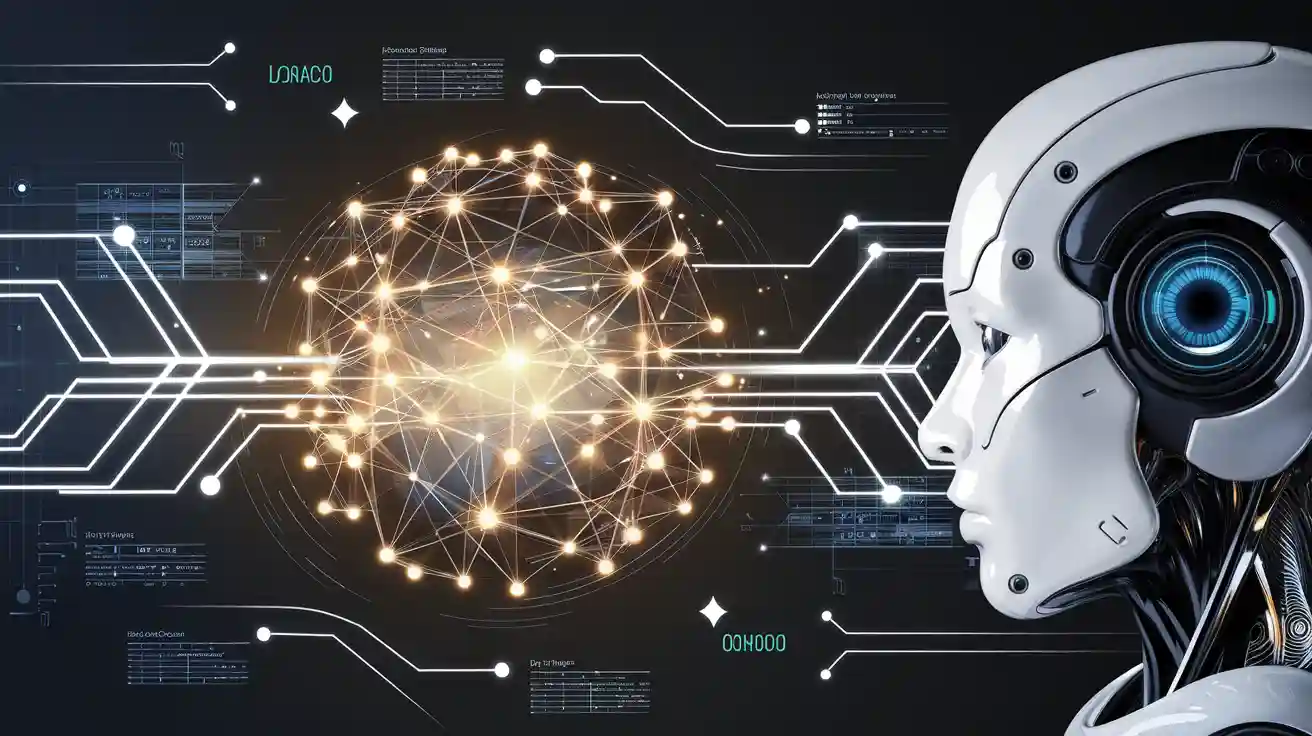
Machine vision systems rely on backpropagation to function effectively. This algorithm allows these systems to learn from data and refine their neural networks. By adjusting weights and biases, backpropagation improves how machines interpret visual information. You can see its impact in tasks like object recognition, feature detection, and image classification. Without backpropagation, adaptability and precision in these systems would diminish, limiting their ability to handle complex visual challenges. Backpropagation machine vision systems have revolutionized how machines perceive and process images.
Key Takeaways
- Backpropagation helps machine vision systems learn and get better at tasks like finding objects and sorting images.
- It works by first making guesses, checking errors, then fixing mistakes to improve predictions.
- Adding new data often makes these systems smarter and ready for different visual problems.
- Backpropagation lets these systems handle big data and tough jobs easily.
- Problems like overfitting and heavy computer work can be solved using tricks like dropout, regularization, or pre-trained models.
Understanding Backpropagation
The Concept of Backpropagation
Backpropagation is the backbone of modern deep learning models. It enables neural networks to learn from data by systematically adjusting their internal parameters. You can think of it as a feedback mechanism that helps the network improve its predictions over time. When the network makes a mistake, backpropagation identifies the error and guides the system to correct it. This iterative process ensures that the network becomes more accurate with each training cycle.
Tip: Backpropagation is not just about fixing errors; it’s about optimizing the network to handle complex tasks like image recognition and natural language processing.
How Backpropagation Works in Neural Networks
Backpropagation operates through a step-by-step process that refines the network’s weights and biases. Here’s how it works:
- Forward Pass: Inputs are fed into the network, and outputs are calculated based on current weights.
- Error Calculation: The error is computed by comparing the actual output to the target output, using a squared error function.
- Backward Pass: Gradients for each weight are calculated using the chain rule, allowing the network to understand how each parameter contributes to the error.
- Weight Update: Weights are adjusted based on the gradients and a learning rate, reducing the error over time.
Empirical data highlights the effectiveness of this process. For example, after the first round of backpropagation, the error decreased from 0.298371109 to 0.291027924. After 10,000 iterations, the error further reduced to 0.0000351085. This demonstrates how backpropagation systematically improves the performance of neural networks.
Role of Backpropagation in Machine Learning
Backpropagation plays a pivotal role in machine learning by enabling deep learning models to adapt and excel in diverse applications. It allows neural networks to process vast amounts of data, identify patterns, and make accurate predictions. Research has even extended backpropagation to spiking neural networks (SNNs), introducing spatial and temporal adjustments that enhance performance and reduce energy consumption. These advancements validate the algorithm’s importance in complex architectures.
Without backpropagation, machine learning systems would struggle to achieve the precision required for tasks like speech recognition, autonomous driving, and medical diagnostics. By optimizing neural networks, backpropagation ensures that these systems can tackle real-world challenges effectively.
Backpropagation in Machine Vision Systems
Enhancing Feature Detection
Feature detection is a critical step in machine vision systems. It involves identifying key elements in an image, such as edges, corners, or textures. Backpropagation plays a vital role in improving this process. By adjusting the network’s weights and biases, it helps the system focus on the most relevant features. For example, when analyzing an image of a face, backpropagation ensures the system detects essential details like eyes, nose, and mouth.
You might wonder how this works. During training, the system calculates gradients to measure how much each feature contributes to the error. These gradients guide the network to refine its focus, making feature detection more accurate over time. This process allows the backpropagation machine vision system to excel in tasks like facial recognition or medical imaging, where precise feature detection is crucial.
Note: Accurate feature detection lays the foundation for other tasks, such as object recognition and image classification.
Improving Object Recognition
Object recognition involves identifying and labeling objects within an image. Backpropagation enhances this capability by enabling the system to learn from its mistakes. When the system misidentifies an object, backpropagation calculates the error and adjusts the network’s parameters to improve future predictions.
Imagine a backpropagation machine vision system tasked with recognizing animals in photos. Initially, it might confuse a cat with a dog. Through backpropagation, the system analyzes gradients to understand where it went wrong. It then updates its weights to distinguish between the two animals more effectively. Over time, this iterative process sharpens the system’s ability to recognize objects with high accuracy.
This improvement is not limited to simple tasks. Backpropagation allows machine vision systems to handle complex scenarios, such as detecting multiple objects in crowded environments or recognizing partially obscured items.
Optimizing Image Classification
Image classification involves categorizing images into predefined classes. Backpropagation is the driving force behind optimizing this process. It ensures that the system learns to associate specific patterns with the correct labels.
During training, the backpropagation machine vision system uses gradients to minimize the error between predicted and actual labels. For instance, if the system misclassifies an image of a car as a truck, backpropagation identifies the error and adjusts the network’s parameters. This adjustment helps the system make more accurate classifications in the future.
You can see the impact of this optimization in real-world applications. From sorting photos in your smartphone gallery to diagnosing diseases from medical scans, backpropagation enables machine vision systems to deliver reliable results. Its ability to fine-tune neural networks ensures that these systems perform consistently, even when dealing with diverse datasets.
Tip: Regularly updating the system with new data can further enhance its classification accuracy.
Benefits of Backpropagation for Machine Vision

Boosting Accuracy and Precision
Backpropagation significantly improves the accuracy and precision of machine vision systems. By fine-tuning the weights in each layer of the network, it ensures that the system learns to make better predictions over time. For example, when a system misclassifies an object, backpropagation adjusts the weights to reduce future errors. This process allows the network to focus on the most relevant features in an image, such as edges or textures.
You benefit from this improvement in real-world applications. Tasks like facial recognition or medical imaging rely on precise results. Backpropagation ensures that these systems deliver reliable outcomes by continuously learning from data. This accuracy builds trust in machine vision technologies, making them indispensable in critical fields.
Scalability for Large-Scale Applications
Machine vision systems often need to handle vast amounts of data. Backpropagation makes this possible by enabling the network to scale effectively. As the system grows, additional layers can be added to process more complex patterns. Backpropagation ensures that each layer learns efficiently, even in large-scale applications.
Consider a system used for autonomous vehicles. It must process thousands of images per second to identify road signs, pedestrians, and other vehicles. Backpropagation optimizes the learning process, ensuring the network performs well under such demanding conditions. This scalability makes backpropagation a cornerstone for advanced machine vision systems.
Adaptability to Diverse Visual Challenges
Backpropagation equips machine vision systems with the adaptability needed to tackle diverse visual challenges. Whether the task involves recognizing objects in low-light conditions or analyzing images with noise, backpropagation helps the network adjust. By refining the weights and biases in each layer, it ensures the system adapts to new scenarios.
For instance, a system trained to detect animals in clear images can adapt to identify them in blurry photos. Backpropagation enables this flexibility by guiding the network through continuous learning. This adaptability ensures that machine vision systems remain effective across a wide range of environments and tasks.
Tip: Regularly updating your system with new data enhances its adaptability, ensuring it stays relevant in changing conditions.
Challenges of Backpropagation in Machine Vision Systems
Computational Resource Demands
Backpropagation requires significant computational power. Machine vision systems process large amounts of data during training. This involves running multiple iterations to adjust weights and minimize loss. Each iteration demands memory and processing speed, especially when working with deep neural networks. You might notice this challenge when training models on high-resolution images or large datasets.
The need for specialized hardware, like GPUs or TPUs, adds to the complexity. These devices accelerate computations but come with high costs. If you lack access to such resources, training times can increase dramatically. This makes it harder to experiment with different loss functions or optimize your system efficiently.
Tip: Using cloud-based platforms can help you access powerful hardware without upfront investment.
Risk of Overfitting in Neural Networks
Overfitting occurs when a model performs well on training data but struggles with new, unseen data. Backpropagation can amplify this issue if the network becomes too focused on minimizing loss for the training set. You might see this when a machine vision system identifies patterns that don’t generalize to real-world scenarios.
For example, a system trained to classify animals might misclassify a new image because it learned irrelevant details from the training data. This reduces the system’s reliability and limits its practical applications.
Mitigation Strategies for Common Issues
You can address these challenges with several strategies. To reduce computational demands, consider using pre-trained models. These models save time by reusing learned features. For overfitting, techniques like dropout and regularization can help. Dropout randomly disables neurons during training, preventing the network from relying too heavily on specific features. Regularization adds penalties to the loss function, encouraging simpler models.
Another effective approach is to validate your model on separate datasets. This ensures it performs well on unseen data. By combining these strategies, you can improve your machine vision system’s performance while managing backpropagation’s challenges.
Backpropagation remains essential for advancing machine vision systems. It helps you achieve higher accuracy and adaptability by optimizing neural networks. Tasks like image classification and object recognition have seen significant improvements due to this algorithm. While challenges like computational costs and managing training loss exist, ongoing innovations continue to address these issues. You can expect backpropagation to remain a cornerstone of machine vision, driving progress in both research and real-world applications.
FAQ
What is the difference between a forward pass and a backward pass?
A forward pass calculates the output of the neural network by passing input data through its layers. A backward pass adjusts the weights by computing gradients based on the error. Together, they enable the network to learn during training.
Why are gradients important in backpropagation?
Gradients measure how much each weight contributes to the error. They guide the backward pass in updating weights to minimize the error. Without gradients, the network cannot improve its predictions during training.
How does backpropagation handle large datasets?
Backpropagation processes large datasets by dividing them into smaller batches. Each batch undergoes a forward pass and a backward pass. This approach reduces memory usage and speeds up training while maintaining accuracy.
Can backpropagation work without a forward pass?
No, backpropagation relies on the forward pass to calculate the output and error. The backward pass uses this error to compute gradients and update weights. Both processes are essential for training neural networks.
What happens if the gradients are too small?
If gradients are too small, the backward pass becomes ineffective, slowing down training. This issue, known as the vanishing gradient problem, can prevent the network from learning. Techniques like ReLU activation functions help mitigate this problem.








